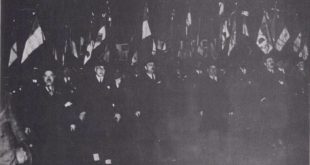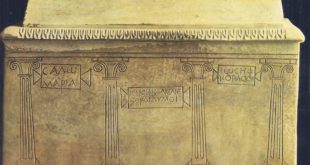SOME DAY there would be no tsars, but there was little sign of that during the last years of the nineteenth century. Alexander III still held Russia in a firm grip. When he died in 1894, his son Nicholas II came to the throne. Nicholas was twenty-six years old. He was a handsome young man and a few months after his father’s death he was married to a German princess. They were in love and it looked as though Nicholas would be a popular ruler.
His reign began badly. In 1896, a great crowd gathered on a field in Moscow to celebrate his coronation as tsar. It was the custom to hand out little presents, such as handkerchiefs and cups, at these celebrations. Afraid that there might not be enough for everyone, the crowd surged forward. When mounted police tried to hold back the crowd, men, women and children were pushed into ditches and two thousand persons were killed. To make it even worse, that same night the tsar and the tsarina, his wife, danced at a ball held at the French embassy. People grumbled that the tsarina was a foreigner who had no feeling for Russians and the tsar was not much better.
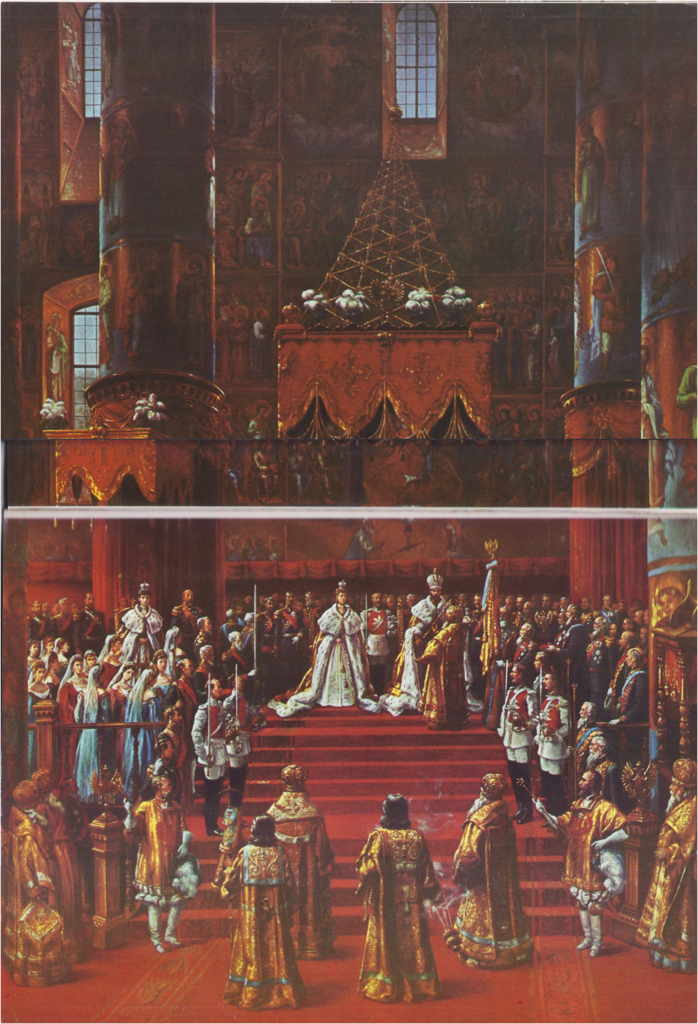
Nor did the people like the tsar’s reply to a message of congratulation from the officials of a town near Moscow. The officials said that they hoped “the rights of individuals and public institutions will be firmly safeguarded.” Nicholas answered that he would support the principle of absolute rule just as firmly “as it was preserved by my unforgettable great father.”
It was plain that under Nicholas the Russians could expect no greater freedom than they had had under Alexander III. There would be no civil liberties, no better treatment of the peasants and of minority groups. There would still be the soldiers, the Cossacks and the secret police to enforce the tsar’s orders and his spies would be everywhere. As time went on, the Russians realized that, unlike his father, Nicholas was a weak man. He was not the ruler the country needed.
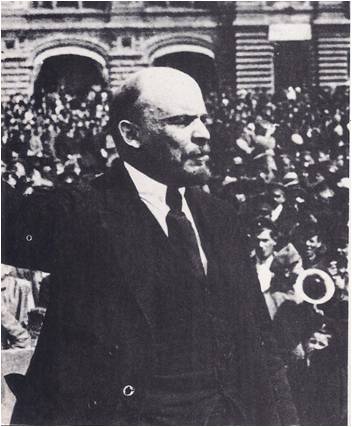
In 1901, out of what remained of the narodnik party, a new party grew — the Social Revolutionaries. They were mildly socialistic and interested in getting land for the peasants. They believed in democracy, but within the party was a terrorist group called the “Fighting Organization.” Even more strange, this group was headed by a secret agent of the police, a man named Azev. He turned over many members of his group to the police; at the same time, he plotted the death of many people in the government. Later, when the truth about him became known, it was impossible to say on which side he had really been. At any rate, the “Fighting Organization” assassinated hundreds of officials, including governors, ministers, police chiefs and grand dukes.
Through his secret agents, the tsar learned that another party had also been formed — the Russian Social-Democratic Workers’ party. Its members were Marxists, and to avoid the Russian police, they met in Brussels, Belgium, in 1903. The Belgian police forced them to move the meeting to London. There the members continued to argue, for they could not agree on the organization of their party. One group, led by Vladimir Ilyich Lenin, wanted a tightly controlled party, with membership open only to professional revolutionists. The second group wanted a looser kind of party, with membership open to anyone who would support its policies. Lenin’s group won and it became known as the Bolsheviks, or “those of the majority.” The other group became known as the Mensheviks, or “those of the minority.” Both groups wanted revolution; they differed on the methods of bringing it about.
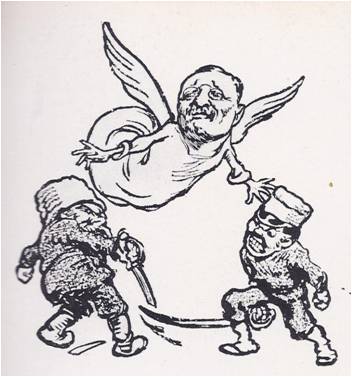
Neither the Mensheviks nor the Bolsheviks seemed to be much of a threat to the tsar; there were so few of them. Besides, Nicholas had other things on his mind. He wanted more territory to rule, territory that might bring in riches. The Russians pushed on into Manchuria and then into Korea, where they came into conflict with the Japanese. Negotiations went on between Russia and Japan, but the Russians were not really interested in teaching a settlement. In February of 1904, the Japanese attacked Russian ships at Port Arthur and Chemulpo. The tsar and his advisers were rather pleased that the Japanese had struck. They had no objection to war. There was nothing like a nice little war to stir up patriotism and make people forget their troubles.
The Russo-Japanese War turned out to be anything but a nice little war. The Russians made one mistake after another and disaster followed disaster. As for the Japanese, they were winning battles, but it was costing them more than they could afford in men and money. When the president of the United States, Theodore Roosevelt, offered to serve as peace-maker, both sides were glad to accept. In August of 1905, after about a year and a half of fighting, they signed a peace treaty at Portsmouth, New Hampshire.
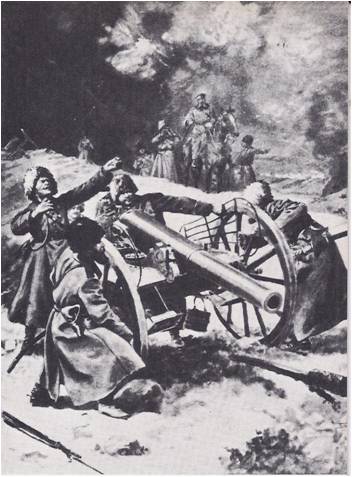
For Tsar Nicholas, it was already too late. His people had hated the war and were deeply discontented with the government. Already, in January of that same year, the workers of St. Petersburg had marched to the palace behind Father Gapon. That was the day called “Bloody Sunday,” when the tsar’s soldiers had fired on the crowd. After “Bloody Sunday,” Father Gapon wrote to the tsar: “The innocent blood of workers, their wives and children, lies forever between thee, O soul destroyer and the Russian people.” Not only workers, but peasants and professional people, wanted a change. There were strikes, riots, assassinations. Sailors on the battleship Potemkin mutinied.
In October, a strike of railroad workers started in Moscow. Spreading to other parts of the country, it set off strikes in many industries. A general strike shut down St. Petersburg, the Russian capital. Here the workers were joined by professional people — by doctors, lawyers, teachers, bankers and ballet dancers. Even businessman closed down their shops and factories, some of them giving strike pay to their workers. Huge crowds gathered in the streets, carrying red banners — the banners of revolution. All the inhabitants of the city seemed to have decided, at one time, to show that they were dissatisfied with the government.
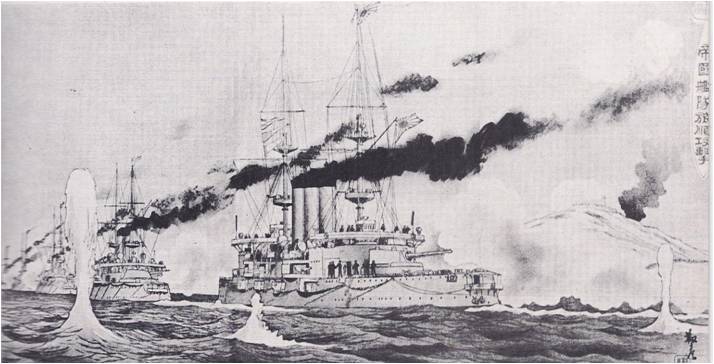
During October, the factory workers of St. Petersburg elected delegates and set up a central council to run the strike. The Russian word for council is soviet — a word that would someday become known to the entire world. During October, too, still another political party was formed in Russia, the Constitutional Democratic party. The Constitutional Democrats were more often called the Cadets, a name suggested by their initials. They were in favour of a democratic government with a parliament like Britain’s.
With the country in turmoil, the tsar and his ministers were forced to take action to save themselves. They issued an order giving civil liberties to the people. They also agreed to set up a Duma, a kind of parliament, with elected representatives. This satisfied the Cadets, who stopped supporting the strikes and the government began to win back control of the country.
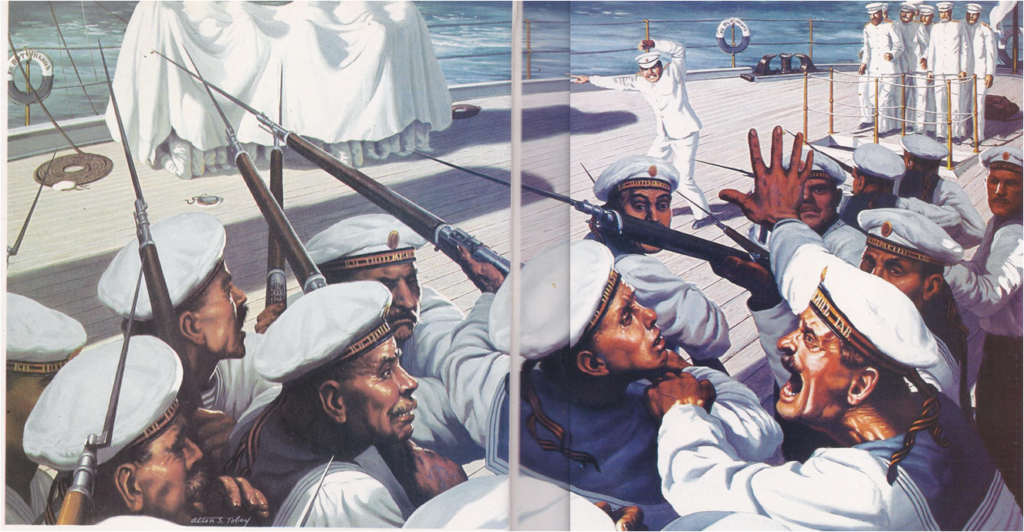
Even so, the turmoil was not yet ended. The Social Democrats, most of whom were in exile, had sent a brilliant young man named Leon Trotsky to St. Petersburg. He had helped to organize the St. Petersburg Soviet and for a while had been its head. Now Lenin, too, returned to Russia, where he worked with the Moscow Soviet. Lenin and Trotsky tried to turn the revolt into a Marxist revolution of workers. There was some street fighting in Moscow, in which about a thousand persons were killed, but the government was more and more in control of the situation. Trotsky and a number of other Social Democrats were arrested, and Lenin fled from the country.
The Revolution of 1905 was over.
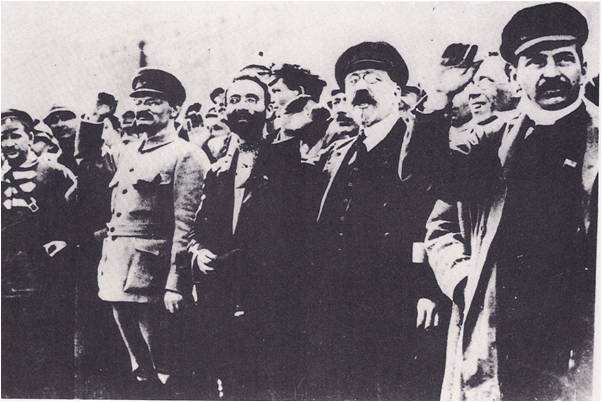
What had it accomplished? What had the people gained? It soon became clear that they had not won true democracy. The tsar’s promise of civil rights meant little. The Duma had no real power; that was still in the hands of the tsar. What he allowed one day, he forbade the next. Revolutionaries were still hunted down. There were still pogroms against the Jews, but the government did put through some reforms that made it easier for the peasants to get land, and they were given the same rights as other Russians. Russia was not democratic, but it had taken the first step toward democracy — a small, fumbling step, but still a step.
During the years that immediately followed the 1905 Revolution, industry grew. The condition of the workers improved somewhat, although a number of miners were shot down in a disturbance at the Lena goldfields in 1912. Perhaps Russia might have gone the full distance to democracy, if it had not been for the outbreak of war — war, the character of the tsar, the tsarina and a strange peasant named Grigori Yefimovich Rasputin.



